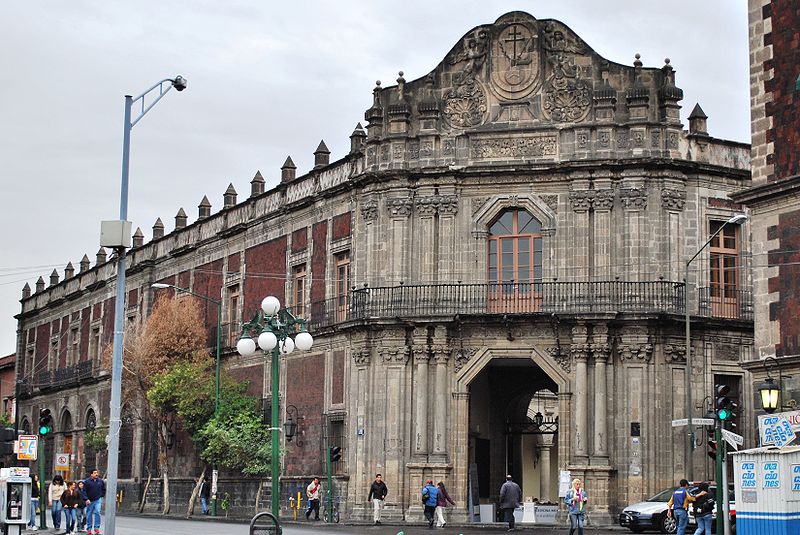
今天,医学院宫殿位于曾经担任多年的宗教法庭宫殿。它位于巴西共和国和委内瑞拉共和国的交界处,就在圣多明戈广场的角落。
这座建筑与西班牙宗教法庭的长期关联直到墨西哥独立战争才结束。但在那之前,并无用作他途。最终,国立医学院搬迁至此。幸运的是,在20世纪50年代,墨西哥国立自治大学(UNAM)搬到了城市大学。墨西哥国立自治大学(UNAM)保留了这座建筑,经过一段时间后,它被改建成了墨西哥医学博物馆。
建筑历史
这座今天依然耸立的建筑是由建筑师佩德罗·德·阿里埃塔(Pedro de Arrieta)于1732年至1736年之间修建的。他之前曾在大都会大教堂上完成了大量的工作,最重要的作品有,一个名为万灵教堂,以及圣费利佩内裡教堂(San Felipe Neri),俗称“ La Profesa。他还设计了位于广场对面的圣多明哥(Santo Domingo)教堂。
尽管阿里埃塔因这项工作而闻名,但他在完成宗教法庭宫殿后不久就去世了,为此他每天领取两比索的薪水。阿里埃塔的原始两层建筑在19世纪增加了第三层。
外部复盖着特松特勒(tezontle),窗户和门用灰白色奇鲁卡石(chiluca stone)框起。作为新西班牙总督辖区的神圣宗教裁判的所在地,宗教法庭于1571年设立。 圣多明哥(Santo Domingo)寺院的多明尼加传教士已经在1526年被委以审判任务。
法庭的介绍
作为宗教法庭的总部,这座建筑设有听证室、审判室、密室、监狱以及两名宽恕官的居住区。那时它通常被称为“奥亚斯加平房Casa Chata”,指的是其朝向圣多明戈广场的西南角被修建成了一个略显钝化的结构。这在通常是方形的总督宫建筑中有些创新。
宫殿的地牢部分被称为“永久监狱”,因为被关押在那里的人很少有人能够离开。
然而,这个职位的权力和重要性之所以到这里,是因为埃尔南·科尔特斯(Hernán Cortés)之子马丁·科尔特斯·苏尼加(Martín Cortés Zúñiga)参与了一场旨在于1566年就将新西班牙割席独立的阴谋。他和同谋者们接受了审判,遭受了严厉的惩罚,包括酷刑。同一法庭还迫害了卡巴哈尔家族,原因是他们重归犹太教。后来,他们还处以绞刑。宗教法庭直到1821年墨西哥独立取得胜利时才被废除。
博物馆介绍
这是医学宫殿博物馆,举办着国内医学历史方面非常有趣的展览。展览厅包括重建手术、19世纪蜡像、组织学、草药医学、植物园、前西班牙医学和胚胎学等展示。此外还有一幅总督画廊和19世纪药房展览。
这是欣赏建筑和学到知识的好方法。
周一休馆。
 The Tribunal of the Inquisition was installed in New Spain in 1571 and from then on it was located on the border of the Santo Domingo convent and within the boundaries of the plaza of the same name. The palace that remains today is the work of the architect Pedro de Arrieta, and was erected between 1732 and 1736. The airy arcade of the central courtyard boasts four corners without columns and leads to a beautiful staircase. In the offices, called "El Secreto" of the Holy Office, hundreds of prisoners were interrogated, tortured and sentenced for political and religious reasons, and in the "perpetual" prisons, hundreds more died.
The square and the atrium of Santo Domingo witnessed the famous Autos de Fe organized by the Inquisition. These were public processions of the convicts, from Santo Domingo to the Plaza Mayor, where they were confronted by judges and priests and then handed over to the civil power to execute their sentences of death, torture, mutilation, humiliation, or forced labor.
After the court was suppressed in 1816, the building was put to multiple uses. In 1854, it was acquired for the National School of Medicine and an upper floor was added. By 1950 the School of Medicine abandoned the building and began its restoration. Today, it's home to the Museum of Mexican Medicine, the University Art Gallery, and a cultural space.
The Tribunal of the Inquisition was installed in New Spain in 1571 and from then on it was located on the border of the Santo Domingo convent and within the boundaries of the plaza of the same name. The palace that remains today is the work of the architect Pedro de Arrieta, and was erected between 1732 and 1736. The airy arcade of the central courtyard boasts four corners without columns and leads to a beautiful staircase. In the offices, called "El Secreto" of the Holy Office, hundreds of prisoners were interrogated, tortured and sentenced for political and religious reasons, and in the "perpetual" prisons, hundreds more died.
The square and the atrium of Santo Domingo witnessed the famous Autos de Fe organized by the Inquisition. These were public processions of the convicts, from Santo Domingo to the Plaza Mayor, where they were confronted by judges and priests and then handed over to the civil power to execute their sentences of death, torture, mutilation, humiliation, or forced labor.
After the court was suppressed in 1816, the building was put to multiple uses. In 1854, it was acquired for the National School of Medicine and an upper floor was added. By 1950 the School of Medicine abandoned the building and began its restoration. Today, it's home to the Museum of Mexican Medicine, the University Art Gallery, and a cultural space.
Heart of México Walking Route: Santo Domingo - Santa Catarina
< < Señor de la Expiración | Santa Catarina > >
Proyecto “Corredor de Cultura Digital”.
Nombre de la investigación: Investigación Centro Histórico, Monumentos, Edificios y Puntos de Interés (2023)
Dirección de investigación y diseño de Rutas: Acércate al Centro A.C. Guadalupe Gómez Collada
Coordinación e investigación histórica: Fideicomiso del Centro histórico Dir. Maestra Loredana Montes
 palaciodemedicina@gmail.com
palaciodemedicina@gmail.com
 +52 55 5623 3123
+52 55 5623 3123
 http://pem.facmed.unam.mx/
http://pem.facmed.unam.mx/
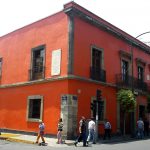
相近 0.06 kms.

相近 0.07 kms.

相近 0.08 kms.
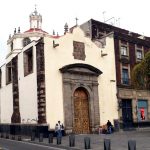
A remarkable chapel on the edge of the Plaza de Santo Domingo . . .
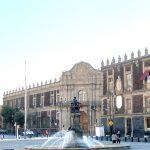
One of Central Mexico City's most important historic plazas . . .
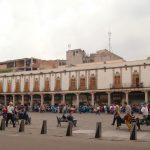
A fascinating glimpse into the very real 17th century in Mexico City.
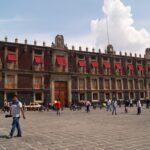
The old customs building today shows off some the SEP's extensive art collection.
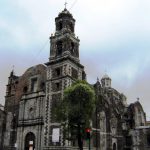
One of the most dramatic of old Baroque temples in the City, this one is the parish church of La Lagunilla.